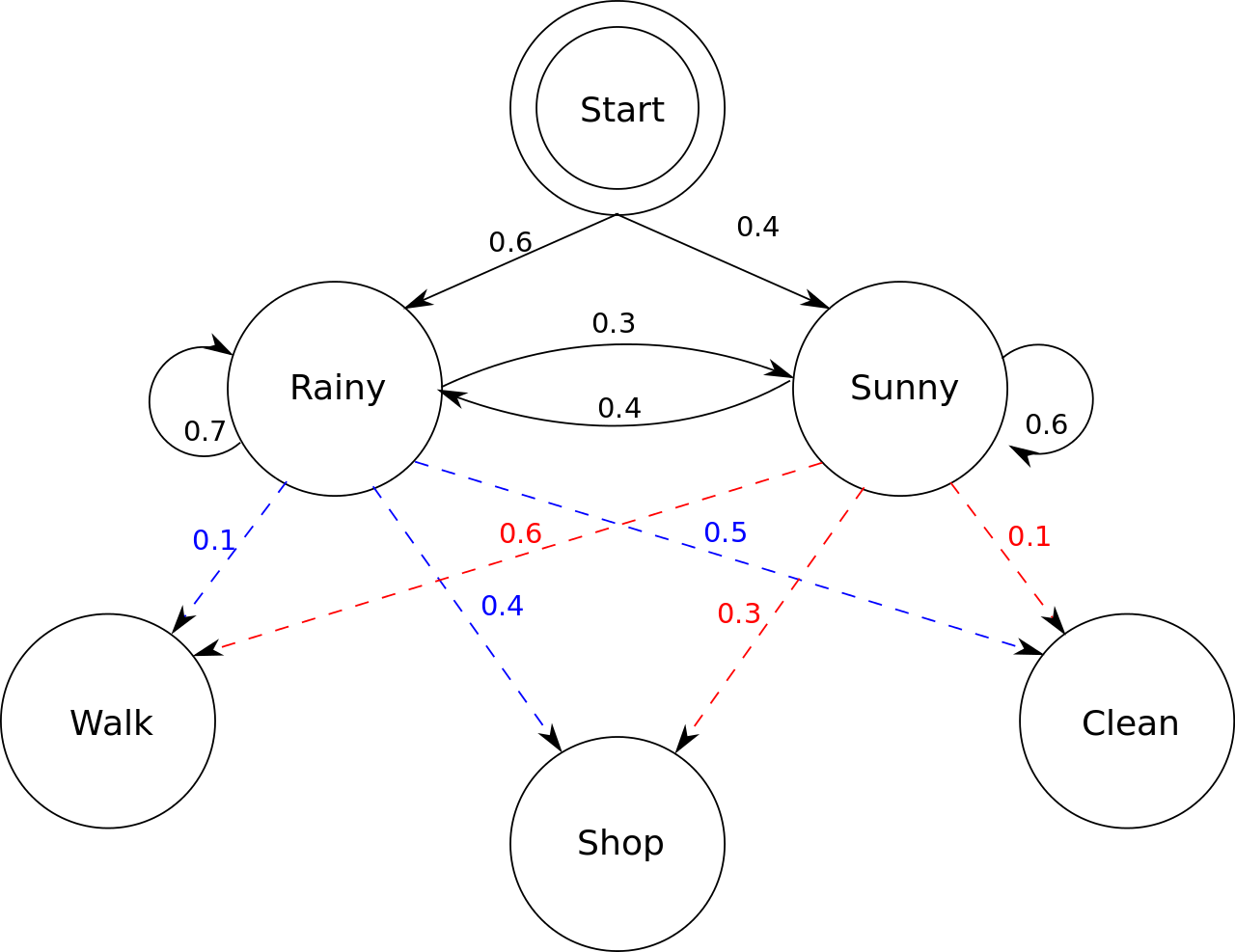algorithm – by Pratik Lahiri
 When ground water evaporates, dust in the clouds and low temperature gives a chance of snow. Weather and many other complex systems have many internal components (water, dust, temperature) that interact with each other to generate an observable effect (snow). The hidden Markov model is the simplest dynamic Bayesian network that models the internal of a complex system as a Markov chain. Read More ›
When ground water evaporates, dust in the clouds and low temperature gives a chance of snow. Weather and many other complex systems have many internal components (water, dust, temperature) that interact with each other to generate an observable effect (snow). The hidden Markov model is the simplest dynamic Bayesian network that models the internal of a complex system as a Markov chain. Read More ›
algorithm – by Benjamin Villalonga Correa
 Pitch correction is widely used in the music industry both in real time and in post-production situations. Depending on the original quality of an artist, pitch correcting techniques can range from allowing an already good performance to become excellent (as far as tuning is concerned) to making a terrible one sound robotic and surprisingly late-90-ish. From an engineering point of view, the difficulty of these algorithms boils down to being able to manipulate independently time scales and frequencies in a signal. One algorithm that achieves this is the Phase Vocoder, which is discussed in this presentation. Its range of application goes beyond pitch correcting purposes, so more insight in the kind of problems that it tackles will also be given. An example of the commercial software Auto-Tune is also linked. Read More ›
Pitch correction is widely used in the music industry both in real time and in post-production situations. Depending on the original quality of an artist, pitch correcting techniques can range from allowing an already good performance to become excellent (as far as tuning is concerned) to making a terrible one sound robotic and surprisingly late-90-ish. From an engineering point of view, the difficulty of these algorithms boils down to being able to manipulate independently time scales and frequencies in a signal. One algorithm that achieves this is the Phase Vocoder, which is discussed in this presentation. Its range of application goes beyond pitch correcting purposes, so more insight in the kind of problems that it tackles will also be given. An example of the commercial software Auto-Tune is also linked. Read More ›
algorithm – by Dot Silverman
 Simple stitch algorithms can help us visualize and physically understand hyperbolic shapes. Read More ›
Simple stitch algorithms can help us visualize and physically understand hyperbolic shapes. Read More ›
algorithm – by Ben Prather
 An informal description of Shor's algorithm for factorization by a quantum computer. Read More ›
An informal description of Shor's algorithm for factorization by a quantum computer. Read More ›
algorithm – by Kiel Williams
 Comparison of Common Algorithms for the Solution of ODE Problems. Read More ›
Comparison of Common Algorithms for the Solution of ODE Problems. Read More ›